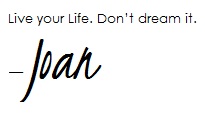Gardening & Yard Insects
We had a fun weekend rich in discoveries, especially for my kids.
On Friday, while visiting Linda Marie’s Enchanted Treasures in Oro Grande, my son spotted a Paper Wasp.
According to Wikipedia, paper wasps are 0.7 to 1.0 inch (1.8 to 2.5 cm)-long wasps that gather fibers from dead wood and plant stems, which they mix with saliva, and use to construct water-resistant nests made of gray or brown papery material. Paper wasps are also sometimes called umbrella wasps, due to the distinctive design of their nests. Unlike yellowjackets and hornets, which can be very aggressive, polistine paper wasps will generally only attack if they themselves or their nest are threatened. Paper wasps feed on nectar, and other insects, including caterpillars, flies, and beetle larvae. Because they are a known pollinator and their diet of known garden pests, paper wasps are often considered to be beneficial by gardeners.
However, beneficial wasps can quickly become a nuisance to urban society. They pack a powerful, painful sting that can cause severe allergic reaction and even death in some human victims.
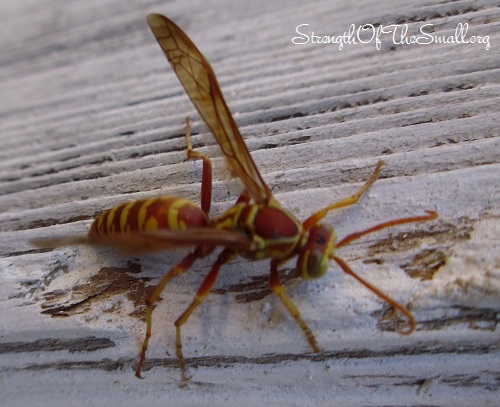
On Saturday, while spending time in the backyard, my little explorer of a Son found what seems to be a Beetle with a stinger or retractable ovipositor (an organ located at the end of the abdomen used by female insects to lay eggs. It could also be used as a piercing, stinging organ in many parasitic species such as Wasps).
It looks similar to the Darkling Beetle, however, it was our first time seeing one with an ovipositor. I will inquire about this insect on WhatsThatBug.com. In the mean time, any information about this insect will be greatly appreciated.
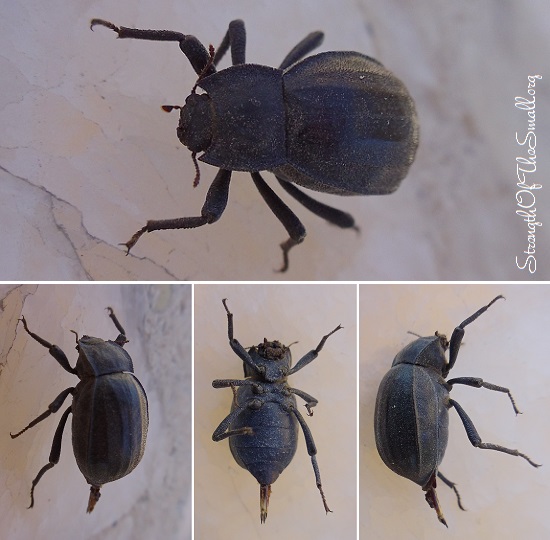
On Sunday morning, I spotted a Red-shafted Northern Flicker woodpecker on one of our next door neighbor’s tallest Pine Trees. They have red feather shafts and red on the underside of their tail feathers (as you can see on the picture below). The male and female differ in that only the male has red whisker marks. Unlike other woodpeckers, Northern Flickers prefer to hunt for insects on the ground. They eat nuts, ants, seeds, berries, beetle larvae as well as other insect larva. Click here or here to learn more about this bird.
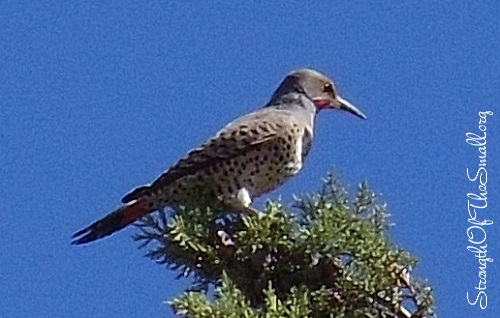
Thanks to the awesome weather, I did some gardening and got my hands dirty. I transplanted the last four Pendula Yucca sprouts to the new designed area in the backyard and my Mint into a large planter. My husband build a primitive wood planter for the “Peach Blossom” hybrid Oleander (the only I kept from last months giveaway). I removed spent fronds from my Palm Tree.
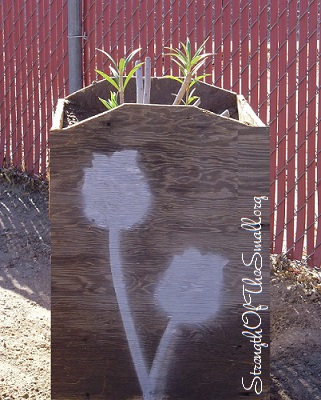
To top it all off, we spend our night looking at the stars under a gorgeous full moon.
